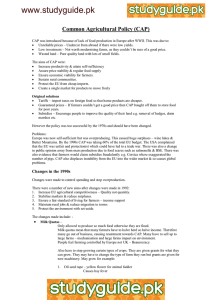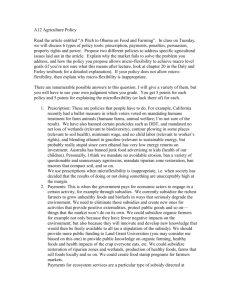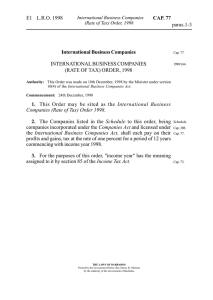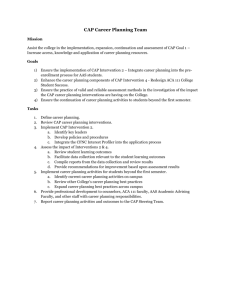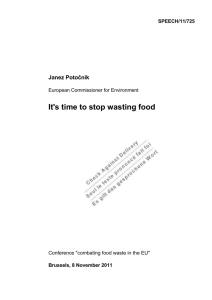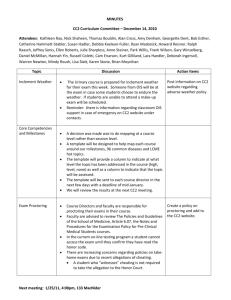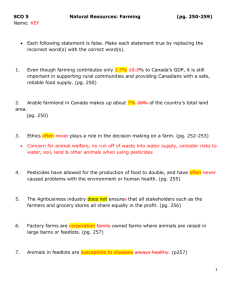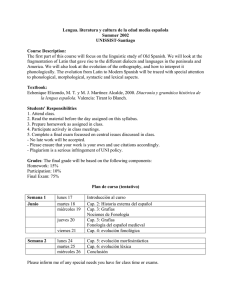subsidy/government intervention failure case study: cap
advertisement
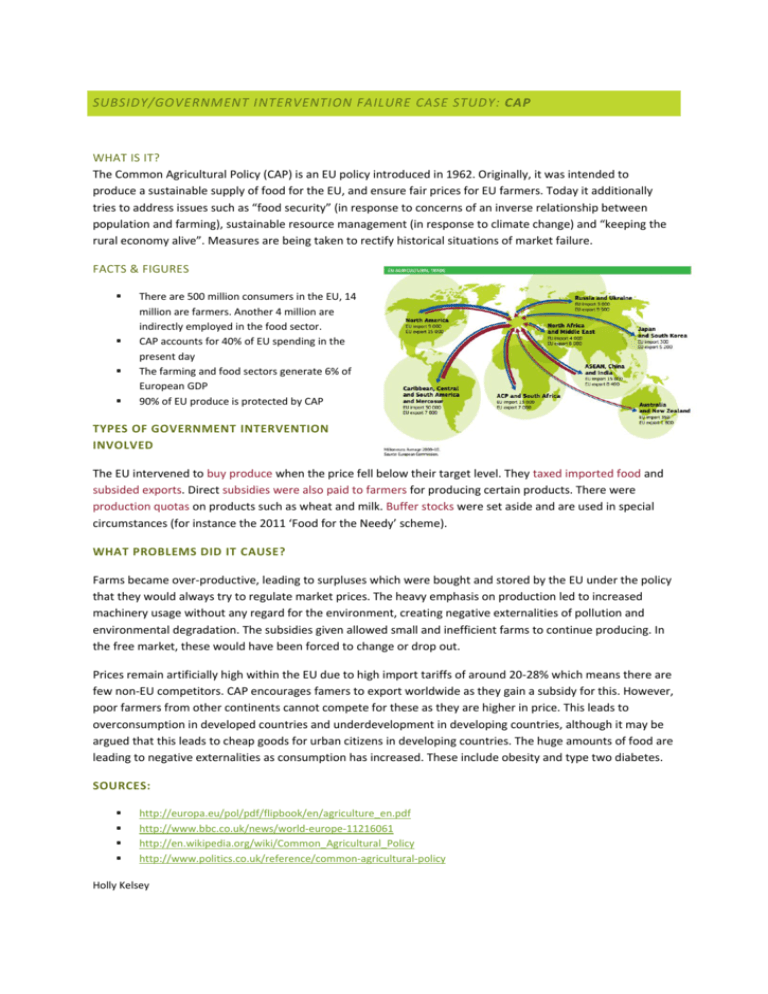
SUBSIDY/GOVERNMENT INTERVENTION FAILURE CASE STUDY: CAP WHAT IS IT? The Common Agricultural Policy (CAP) is an EU policy introduced in 1962. Originally, it was intended to produce a sustainable supply of food for the EU, and ensure fair prices for EU farmers. Today it additionally tries to address issues such as “food security” (in response to concerns of an inverse relationship between population and farming), sustainable resource management (in response to climate change) and “keeping the rural economy alive”. Measures are being taken to rectify historical situations of market failure. FACTS & FIGURES There are 500 million consumers in the EU, 14 million are farmers. Another 4 million are indirectly employed in the food sector. CAP accounts for 40% of EU spending in the present day The farming and food sectors generate 6% of European GDP 90% of EU produce is protected by CAP TYPES OF GOVERNMENT INTERVENTION INVOLVED The EU intervened to buy produce when the price fell below their target level. They taxed imported food and subsided exports. Direct subsidies were also paid to farmers for producing certain products. There were production quotas on products such as wheat and milk. Buffer stocks were set aside and are used in special circumstances (for instance the 2011 ‘Food for the Needy’ scheme). WHAT PROBLEMS DID IT CAUSE? Farms became over-productive, leading to surpluses which were bought and stored by the EU under the policy that they would always try to regulate market prices. The heavy emphasis on production led to increased machinery usage without any regard for the environment, creating negative externalities of pollution and environmental degradation. The subsidies given allowed small and inefficient farms to continue producing. In the free market, these would have been forced to change or drop out. Prices remain artificially high within the EU due to high import tariffs of around 20-28% which means there are few non-EU competitors. CAP encourages famers to export worldwide as they gain a subsidy for this. However, poor farmers from other continents cannot compete for these as they are higher in price. This leads to overconsumption in developed countries and underdevelopment in developing countries, although it may be argued that this leads to cheap goods for urban citizens in developing countries. The huge amounts of food are leading to negative externalities as consumption has increased. These include obesity and type two diabetes. SOURCES: http://europa.eu/pol/pdf/flipbook/en/agriculture_en.pdf http://www.bbc.co.uk/news/world-europe-11216061 http://en.wikipedia.org/wiki/Common_Agricultural_Policy http://www.politics.co.uk/reference/common-agricultural-policy Holly Kelsey
